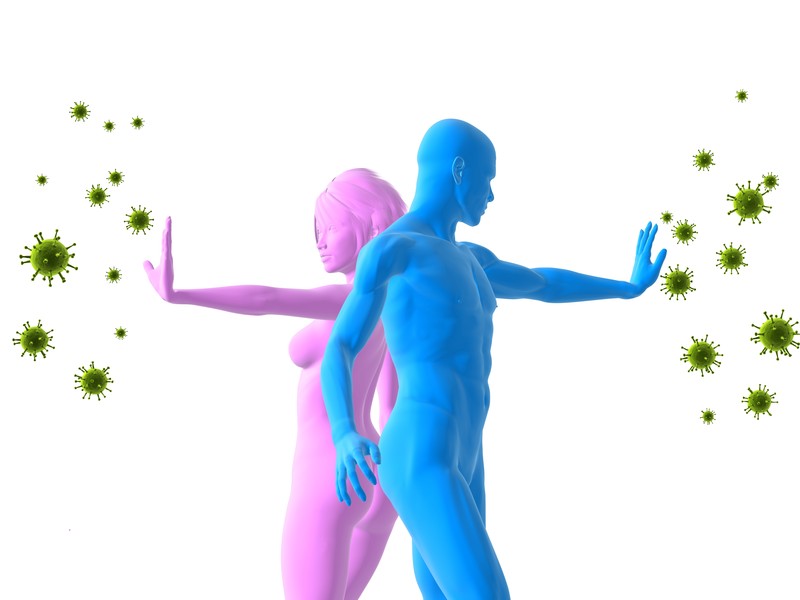Allergies are an exaggerated immune reaction to normally harmless substances known as allergens. It is basically a dysfunction of your immune system. An allergen is something that triggers an allergic response. When a susceptible person is first exposed to an allergen, an immune response is activated. This is the normal response of the body to any foreign substance that comes into contact with the human body. The immune system identifies the product as potentially dangerous and decides to try to eliminate it by secreting a substance called “histamine”, a chemical that has many physiological roles in our bodies. It is this substance that causes allergy symptoms such as itching, redness or even swelling in the mouth or throat. It is this chemical that is been targeted by the modern over-the-counter “antihistamines” drugs.

The most common allergens are pollens from wind-pollenated plants, such as trees, grasses, and weeds. The pollens from insect-pollinated plants are too heavy to remain in the air for long, and they’re less likely to trigger an allergic reaction.
Common triggers of allergies fluctuate from one season to another.
- Spring
- Trees are responsible for most springtime seasonal allergies. Birch is one of the most common offenders in northern latitudes, where many people react to its pollen. Other allergenic trees in North America include cedar, alder, horse chestnut, willow, and poplar.
- Summer
- Hay fever gets its name from hay-cutting season, which is traditionally in the summer months. But the real culprits of summertime seasonal allergies are grasses, such as ryegrass and timothy grass, as well as certain weeds. According to the Asthma and Allergy Foundation of America, grasses are the most common trigger for people with hay fever.
- Fall
- Autumn is ragweed season. The genus name for ragweed is Ambrosia, and it includes more than 40 species worldwide. Most of them grow in temperate regions of North and South America. They’re invasive plants that are difficult to control. Their pollen is a very common allergen, and the symptoms of ragweed allergy can be especially severe. Other plants that drop their pollen in the fall include nettles, mugworts, sorrels, fat hens, and plantains.
- Winter
- By winter, most outdoor allergens lie dormant. As a result, cold weather brings mostly relief to many people with allergies. But it also means that more folks are spending time indoors. If you’re prone to seasonal allergies, you may also react to indoor allergens, such as mold, pet dander, dust mites, or cockroaches.
Causes of allergies
Allergies are influenced by genetic predisposition. If one or both parents suffer from allergies, their children are more likely to develop allergies.
Allergies vary in intensity and can take many forms including atopic dermatitis (eczema), asthma, and allergic rhinitis.
There are two types of allergic rhinitis:
- Seasonal (acute): occurs at specific times of the year, is a reaction to airborne allergens (e.g., ragweed, tree and grass pollen).
- Perennial (chronic): occurs year-round, usually a reaction to indoor allergens (e.g., dust mites, pet dander, and mold).

Allergy sufferers may experience one or several of the following symptoms:
- runny nose with clear discharge
- sneezing
- itchy nose
- nasal or sinus congestion
- headache
- postnasal drip (drainage)
- scratchy throat
- red, inflamed skin and mucous membranes
- red eyes
- itchy eyes
- watery eyes
- difficulty breathing, wheezing
- cough
- asthma (in severe cases)
- hives
- anaphylactic shock (in severe cases)
Treating seasonal allergies
The best advice from conventional doctors for hay fever and year-round allergic rhinitis is avoidance of allergens (preventative measures) that trigger symptoms for you. This is hard to do, it restricts your social life and difficult to maintain year round. We all live and breathe mostly in the cities after all and we are social creatures by nature. Some of the suggestions for this are:
- Keep windows closed and set the air conditioner to “recirculate”;
- Plan outdoor activities in the afternoon when pollen counts are lowest (highest in the morning);
- Avoid outdoor activities on very windy or sunny days when pollen counts are at their highest. Rain makes pollen fall to the ground;
- Shower and wash hair after outdoor activities;
- Do not line-dry clothes and bedding outside.
- Keep humidity levels in the house between 40-45%, minimize use of humidifiers.
- Avoid having rugs and carpets, knickknacks and other dust-collecting objects;
- Avoid having pets in the house;
- Wash bedding in hot water, at least every 2 weeks;
Generally speaking, starting treatment before exposure to the allergen is more effective than starting when symptoms are already present.
When you can’t avoid your allergens, other treatments are available, including:
- over-the-counter decongestants and antihistamines or a combination of medications containing acetaminophen, diphenhydramine, and phenylephrine
- prescription medications, such as steroid nasal sprays, that reduce the inflammation in your nose and trachea.

Alternative treatments
Some of the treatments employed by naturopaths include any or all of these:
- Botanical tinctures – extracts of plants that have the properties to re-balance the immune system
- Quercetin, a flavonoid that gives fruits and vegetables color, a natural antihistamine
- Lactobacillus acidophilus, the “friendly” bacteria found in yogurt
- Spirulina, a type of blue-green algae
- Vitamin C, which has some antihistamine properties
